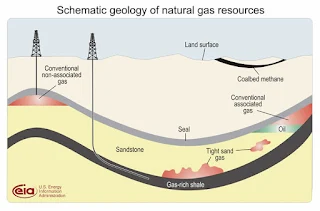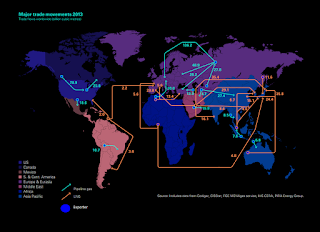


Natural gas comprises biogenic gas and thermogenic gas with differences contingent
upon conditions of origin.
Biogenic gas forms at low temperatures at overburden depths of less than 3,000 feet
under anaerobic or conditions associated with high rates of marine sediment
accumulation. Oxygen in the sediments is consumed or eliminated early. And before
reduction of sulfates in the system. Methane, the most common of natural gas
constituents, forms after the sulfates are eliminated by hydrogen reduction of carbon
dioxide. Anaerobic oxidation of carbon dioxide produces methane. Current estimates
suggest that approximately 20 percent of the world’s known natural gas is biogenic.
Thermogenic gas forms at significantly higher temperatures and overburden pressures. It
contains methane and significantly larger amounts of heavier hydrocarbons than biogenic
gas. As time and temperature increase, progressively lighter hydrocarbons form as wet
gas and condensate in the latter stages of thermogenesis.



